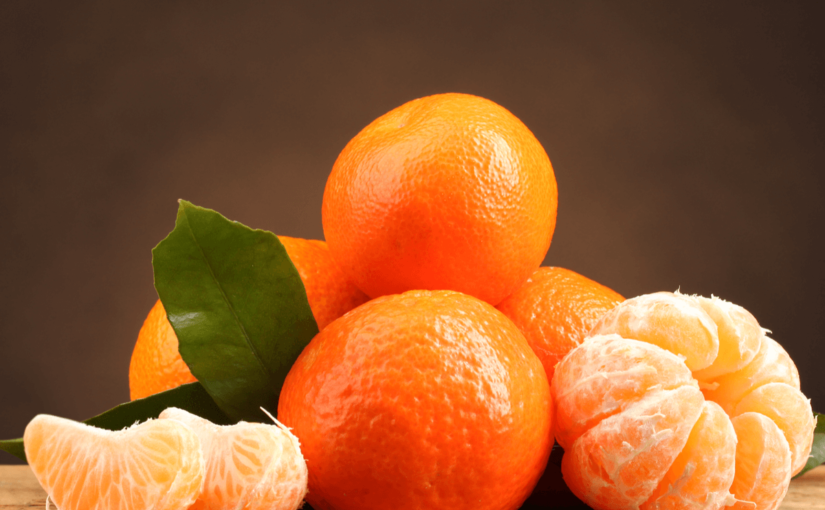
angerines are a variety of citrus fruits and closely related to oranges. They distinguished from oranges by their smaller size, loose, easily peelable skin (pericarp) and have a more-sweeter juicy flesh (arils). They are also known as mandarin oranges in Europe. In Japan, a closely related seedless variety of mandarins known as Unshu mikan or satsuma mandarin grown in abundance in Kagoshima prefecture. Just as in oranges, mandarins also belong to the Rutaceae (Citrus Family) and known scientifically as Citrus reticulata.
(adsbygoogle=window.adsbygoogle||[]).push({}); The tangerine tree is smaller than oranges with slender branches, and deep-green leaves with pointed ends. The fruit is flat, small compared to “Navel” or “Valencia” oranges. Its loose, deep-orange color skin (pericarp) can be peeled rather easily. Inside, it features extensive fibrous pith, which is loosely attached to the inner skin and edible arils. An average-sized fruit has 8-10 juicy segments (arils).
Benefits of tangerines
- As in oranges, tangerines too are very low (53 calories/100 g) in calories. Nevertheless, they are valuable sources of flavonoid antioxidants like naringenin, naringin, hesperetin, vitamin-A, carotenes, xanthins, and lutein; in fact, many times higher than in the oranges.
- Also, the citrus fruits are very rich sources of vitamin-C (ascorbic acid), a water-soluble vitamin. Vitamin-C is one of the powerful natural antioxidant, which play vital role in collagen synthesis, wound healing, antiviral, anti-cancer activity, and help prevent from neuro-degenerative diseases, arthritis, and cold/fever by removing oxidant-free radicals from the body. Vitamin-C helps in the absorption of iron in the food by reducing it from ferrous form to efficiently absorbing ferric form in the gut.
- Further, they contain natural soluble and insoluble fiber like hemicellulose, pectin…etc., which prevents cholesterol absorption in the gut. Adequate fiber in the food aids in smooth bowel movements by acting as a laxative.
Citrus fruits, as such, have long been valued for their wholesome nutritious and antioxidant properties. It is a scientifically established fact that citrus fruits, especially oranges, by their richness in vitamins and minerals, have many proven health benefits. Moreover, nutritionists begin to appreciate the benefits of other biologically active, non-nutrient compounds in citrus fruits such as phytochemical antioxidants. Soluble and insoluble dietary fibers play a vital role in the reduction of risk factors for cancers, many chronic diseases like arthritis, and from obesity and coronary heart diseases.
Selection and storage
Tangerines are winter season fruits. However, one may find them in supermarkets all round the year; thanks to advanced storage technologies. Buy healthy-looking fruits featuring bright orange color and feel heavy in hand. Avoid fruits with spots, excessively softened or feel “hollow” in hand.
Commercially, citrus fruits are washed and waxed to extend their shelf life, appearance, and market price. They are safe to use, however, choose healthy fruits since often their defects may be disguised by waxing.
Once at home store, store them in a zip pouch and place inside the refrigerator. They keep well for up to a week; however, try to eat as early as possible to enjoy their rich flavor and to get full benefits of nutrients.
【Reference】https://www.nutrition-and-you.com/tangerines.html






